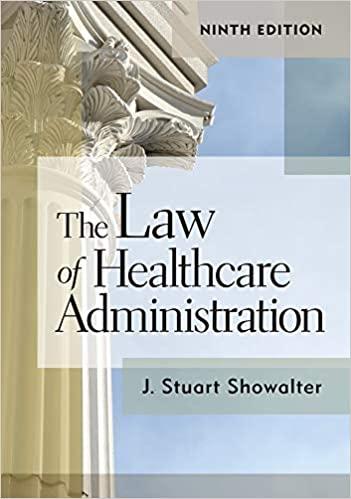Kyler was assumed to be female at birth. However, at the age of ten Kyler began exhibiting
Question:
Kyler was assumed to be female at birth.
However, at the age of ten Kyler began exhibiting signs that he was a boy. At the age of twelve, due to increasing gender dysphoria, Kyler began engaging in self-harming behaviors.
When Kyler was thirteen, he told Ms. Prescott that he was a boy. As Kyler entered puberty, his gender dysphoria significantly worsened and he continued to engage in severe self-harming behaviors. [Over the next few years he saw a therapist and an endocrinologist and received some treatment, but “he still experienced depression and gender dysphoria” and continued to have suicidal thoughts. Eventually he was admitted to RCHSD’s Child and Adolescent Psychiatry Services (“CAPS”) unit on a psychiatric hold because he was a danger to himself.]
The RCHSD and CAPS staff was informed by Ms. Prescott of Kyler’s male identity and “his need to be referred to exclusively with male gender pronouns.” Kyler’s medical records reflected his legal name and gender change. His male gender identity was also denoted on his RCHSD medical wrist bracelet.
Upon intake, the RCHSD staff assured Ms.
Prescott “that Kyler’s sex and gender identity would be respected and affirmed” and that “all staff would refer to Kyler with male gender pronouns and would otherwise treat him as a boy.”
Despite knowing that Kyler was a “transgender boy in acute psychological distress,”
“nursing and other RCHSD staff repeatedly addressed and referred to Kyler as a girl, using feminine pronouns.” Kyler complained to his mother during his stay that the staff referred to him with feminine pronouns, which caused him extreme distress. .........
Discussion Questions
1. Can you explain why this is a civil rights issue? Why do you suppose Ms. Prescott did not assert a wrongful death claim?
2. What were the responsibilities of the CAPS unit personnel in implementing the psychiatric “hold,” and why were they not carried out?
3. What is the difference between “sex” and “gender”?
4. Can you explain the terms transgender, transsexual, gender nonconforming, and cisgender? How do they differ, if at all, from sexual orientation?
5. How can HR policies and practices be used to deal with these kinds of situations?
Step by Step Answer:






